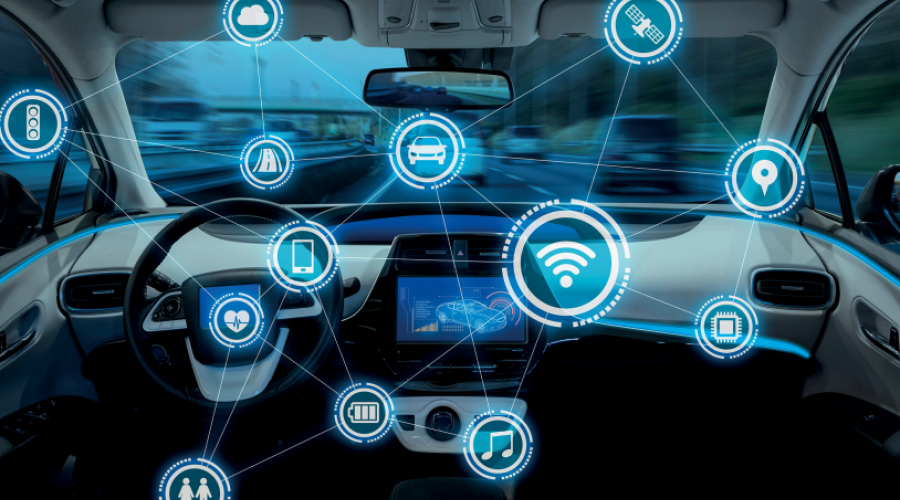Webinar Report: 5G for the Automotive Industry

GLOBAL5G WEBINAR "How 5G Can Support Transformation in the Automotive Industry"
In this report, we report the key discussion points of our webinar entitled "How 5G can support transformation in the automotive industry", organised by IDC in collaboration with Trust-IT, as part of our analysis on the benefits of 5G for diverse vertical industries across Europe.
The webinar took place on 10 October 2018 with experts from Ericsson Research and IDC, bringing great insights into the opportunities and challenges that 5G will bring to the European Automotive Industry over the next few years
Agenda
- Welcome & Introduction, Daniela Rao, Senior Research & Consulting Director, IDC Italy
- The Role of 5G in Sustaining Automotive Industry Transformation, John Delaney, Associate Vice President, European Mobility, IDC
- Mikael Fallgren, Ph.D. Senior Researcher, Ericsson Research, Sweden and coordinator of 5GCAR, funded through the 5G Public Private Partnership
- Questions & Answers
- Conclusions.
Watch the webinar here
Key messages
The automotive industry is one of the most crucial sectors for Europe’s economic growth and prosperity, contributing 4% of EU's GDP and creating employment for over 12 million people.
The EC is committing to large research and innovation investment to keep Europe's global technological leadership in the sector and strengthen its competitive position. By 2020, the EC will have more than doubled the available funding for collaborative research and innovation activities for the automotive sector, with a focus on green vehicles, decarbonisation of conventional engines and safety.
Meanwhile, the automotive industry needs to reinvent itself and create a new paradigm for Europe’s mobility ecosystem (especially in the wake of the ‘diesel-gate’ scandal). The deployment of 5G presents great opportunities to develop new business and ownership models based on vehicle digitalisation and decarbonisation.
Connected Vehicles are not just as an opportunity, but as a series of opportunities, some of them enhanced by the capabilities of 5G, and some of them enabled by those capabilities:
- Vehicles are being equipped with mobile connections enabling infotainment applications, and related content & services, to be used by the driver and passengers. An increasingly rich and complex range of multimedia content, gaming and other interactive content will be involved, as cellular network performance and coverage improve, and as user uptake grows.
- Delivery and usage of advanced navigation information, using a combination of emerging technologies. Navigation will be enhanced as vehicles detect, record and share information about obstacles such as road bumps, potholes and dangerous bends, creating a networked hazard-mapping system. Dashcam video sharing will become increasingly popular, enabling over-the-shoulder collaborative support.
- Data from the vehicle will be collected and shared among stakeholders, enabling features such as in-car e-commerce and travel-experience customisation, by sharing car data with partners such as fuel suppliers, retailers and restaurants. The use case is powered by advanced data mining techniques and cognitive technologies, and 5G will be needed to support the large volumes of data involved.
- Traffic data coming from a large number of vehicles in a locality can be aggregated and analysed to optimise the management of traffic. The enhanced service reliability of 5G will be a key asset in developing traffic optimisation, especially where emergency situations are involved.
- As autonomous vehicles and intelligent road infrastructure become widespread, the low latency and high reliability of 5G networks can play a crucial role in governing the operation of traffic, mediating vehicle-to-vehicle, vehicle-to-infrastructure and vehicle-to-server interactions.
So, we see a progression of opportunities for automakers, service providers and network operators, as automotive transformation. Some near-term opportunities are already being enabled by today’s 4G networks. And as 5G networks come on stream, they will support a major expansion in both the scale and the scope of new services and capabilities that will be are available to drivers during the coming decade.
Conclusions
We are at the starting line of the transformation in the driving experience that connectivity can enable. The industry is making a concerted push towards increasing levels of autonomy in vehicle operation, and this will need levels of performance and reliability that today’s mobile networks cannot deliver. 5G networks will overcome these limitations by delivering higher capacity, lower latency, denser connectivity and service-level guarantees, while multi-stakeholder co-operation between Regulators, Public Sector, Automotive Manufacturers, Telecom stakeholders will play an essential role in accelerating the societal benefits of connected vehicles.



